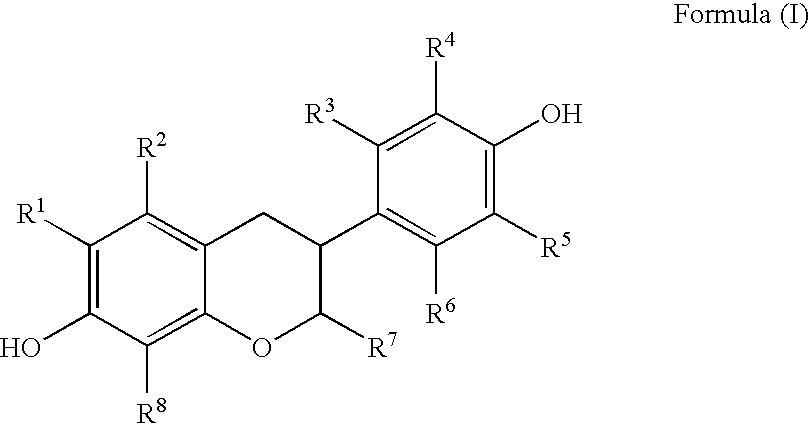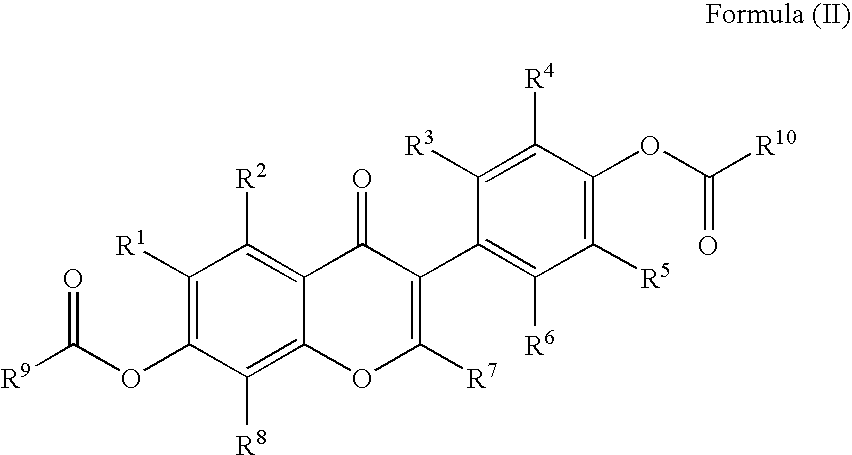Preparation of Flavonoid Compounds
a technology of flavonoid compounds and compounds, applied in the field of chemical synthesis, can solve the problems of inability to reuse catalysts, inability to prepare catalysts wessely and prillinger, and inability to easily perform processes
- Summary
- Abstract
- Description
- Claims
- Application Information
AI Technical Summary
Benefits of technology
Problems solved by technology
Method used
Image
Examples
examples
Preparation of (+ / −)-Equol From Diaidzein Diacetate
[0020] A 250-ml round bottom flask was equipped with reflux condenser, heating mantle, and magnetic stirrer, and was charged with 8.15 grams of daidzein diacetate (0.024 mole), 100 ml of acetic acid, 20 grams of ammonium formate (31 mole), and 5.0 grams of commercial Pearlman's catalyst. The mixture was stirred at relfux for 1.4 hours, at which time thin-layer chromatographic analysis indicated consumption of the starting material. The reaction mixture was cooled to room temperature, diluted with φml of ethyl acetate, and filtered through a pad of diatomaceous earth filter aid. The resulting clear filtrate was poured into about 500 ml of water and shaken. The layers were allowed to separate and the top organic layer was separated, washed with water and then with 5% aqueous sodium bicarbonate solution to remove residual acetic acid. (The acetamide by-product is extracted into the water layers during this procedure.) The resulting c...
PUM
| Property | Measurement | Unit |
|---|---|---|
| temperature | aaaaa | aaaaa |
| temperature | aaaaa | aaaaa |
| temperature | aaaaa | aaaaa |
Abstract
Description
Claims
Application Information
 Login to View More
Login to View More - R&D
- Intellectual Property
- Life Sciences
- Materials
- Tech Scout
- Unparalleled Data Quality
- Higher Quality Content
- 60% Fewer Hallucinations
Browse by: Latest US Patents, China's latest patents, Technical Efficacy Thesaurus, Application Domain, Technology Topic, Popular Technical Reports.
© 2025 PatSnap. All rights reserved.Legal|Privacy policy|Modern Slavery Act Transparency Statement|Sitemap|About US| Contact US: help@patsnap.com



